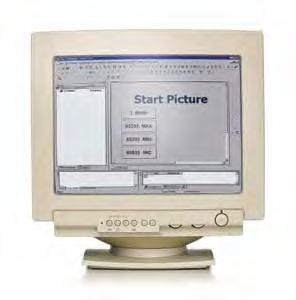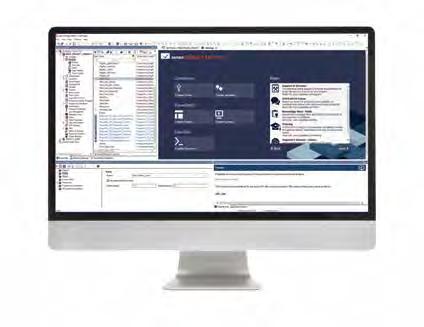
5 minute read
Modularization: greater than the sum of its parts
“Modularity is the degree to which a system‘s components may be separated and recombined. The concept is used to reduce complexity by breaking a system into varying degrees of interdependence and independence across and hide the complexity of each part behind an abstraction and interface,” is the rather dry explanation on Wikipedia.






Washitsu: since the 14th century, Japanese rooms have been built in a modular and standardized way, based on rice mats that were used as a measure of area.
It is through interaction that the assorted building blocks become more than the sum of their parts. At the same time, this interaction between the different systems is one of the biggest challenges. Modularization is often described using the analogy of Danish building blocks, but if you take a closer look at their invention, the basic principle is quite pragmatic. Due to a lack of resources, a construction kit was created that enabled more than one idea to be implemented. If a proposed idea is no longer interesting, the object is dismantled and reassembled.
A more current topic is synthetic biology, where individual cell functions are produced as modules and can be introduced to organisms in any combination. This can produce different substances. If you look at the requirements of researchers, you’ll find that flexible, modular equipment is a must-have. The process chains necessary for the synthesis of these artificial cells are created by assembling production modules. But this is just one example of the flexible design of production processes. There is high demand for new technologies – for petroleumfree plastics, personalized medicine, new materials for batteries or innovative technologies for energy production. Or, indeed, as recent events have highlighted, the need to rapidly produce specific vaccines.
FROM LAUGHING STOCK TO DECENTRALIZED PRODUCTION
The idea of bringing production back to the consumer was ridiculed only a few years ago – but today this approach has become the consensus. However, in order for decentralized production to succeed, automation is necessary. Many production processes require specialized methods. Small, scalable modules can make it easier to gradually automate processes – after a smallscale launch, production is scaled up for the turnkey module groups.
Modularization also makes it necessary to share an increased amount of information – to transfer the current status, transfer target and actual values, or to communicate key figures for process optimization.
Communication standards for uniform data exchange have proven to be very successful here. A good example of this is the Modbus protocol with its clear functionality. It enables a simple communication process, resulting in the requester gaining clear control over communication. This communication standard has established itself, in particular, in the market for decentralized energy generation.
For more complex communications, OPC UA has become very widespread in the industrial environment, and IEC 61850 is being used increasingly in the energy sector.


HOW HAS ZENON DEVELOPED IN THIS WORLD OF MODULARIZATION?
In zenon version 5.50, which was released 20 years ago, it was already important to be able to scale easily. At that time, the network technology of industrial Ethernet was just beginning. Projects could be scaled very easily by means of network configuration in the zenon project, from small CE devices to redundant pairs of servers. Even back then, modules such as data types, alarms and user administration could be configured as templates. The multi-project management used these specifications again in the individual projects in the work area.
A big step toward further modularization was taken with version 6.0. A new editor concept allowed the creation
The 5.50 editor (2001, left) in contrast to the current zenon Studio (right).
and reuse of project content. Under the name “straton” at the time, the Logic Service was combined with zenon as an integrated solution. This paved the way for today’s modular concept, further developed from Smart Objects. These are application functions combined into modules, i.e. parts of the system that perform a specific function. Smart Objects can be collected as templates in a library. There are no longer any limits to modularity. With the help of these modules, our industry experts compile special application packages, also known as application sets.
PERFECT INTERPLAY OF MODULARIZATION AND STANDARDS
zenon projects are configured automatically using these modules. The IEC 61850 standard from the Energy industry defines communication in substations. Substation configuration language (SCL) files define the task of the substation, voltages, switch panels, transformers and more. A complete zenon project can be created using a wizard. This is one example where standards and modularization interact seamlessly.
Another example of modularization in the Process industry is the Module Type Package (MTP) standard. The basic requirement for consistent modularization in production is a uniform description of the information from individual modules. Which data objects are recorded? Which services should be run? The description is carried out uniformly via the cross-industry and cross-manufacturer standard MTP. All information is provided in a standardized format and can thus be integrated into a higher-level Process Orchestration Layer (zenon POL). zenon POL and zenon Engineering Studio interact automatically. All work steps are automated in the Engineering Studio and transferred to the Service Engine via the POL. In this way, a fully automatically generated process control system is created in just a few simple steps.
As you can see, we are not just at the beginning of modularization. Indeed, we are already using standards and modularization together in order to flexibly meet current and future requirements.
MORE INFORMATION
Let yourself be inspired. Modularization and standardized communication: in zenon, a strong duo. Take a look at our solutions:
MODULAR PRODUCTION:
REALIZE POTENTIALS WITH ZENON
ZENON APPLICATION SET FOR SMARTER
SUBSTATION HMI
MARKUS WINTERSTELLER
Technology Excellence Manager
Markus Wintersteller has been part of the COPA-DATA team since 2002. He has headed the Technology Excellence Team since 2020. Previously, he worked in technical support, as a consultant and a technical product manager. He also teaches at the universities of applied sciences in Salzburg and Upper Austria, where he shares his expertise with a new generation of engineers.










